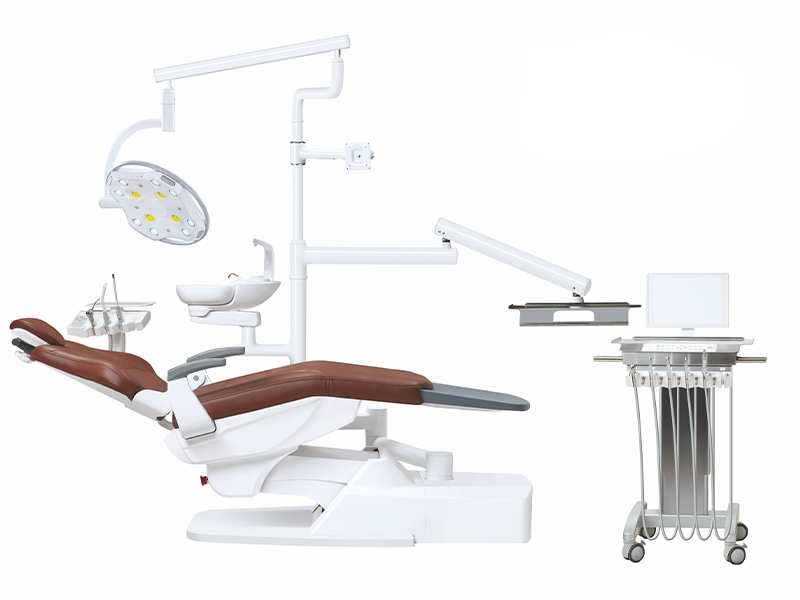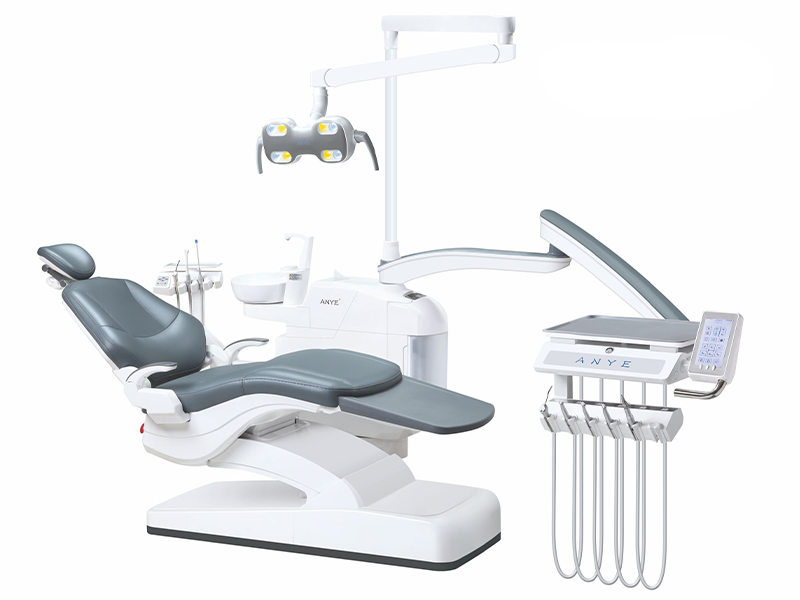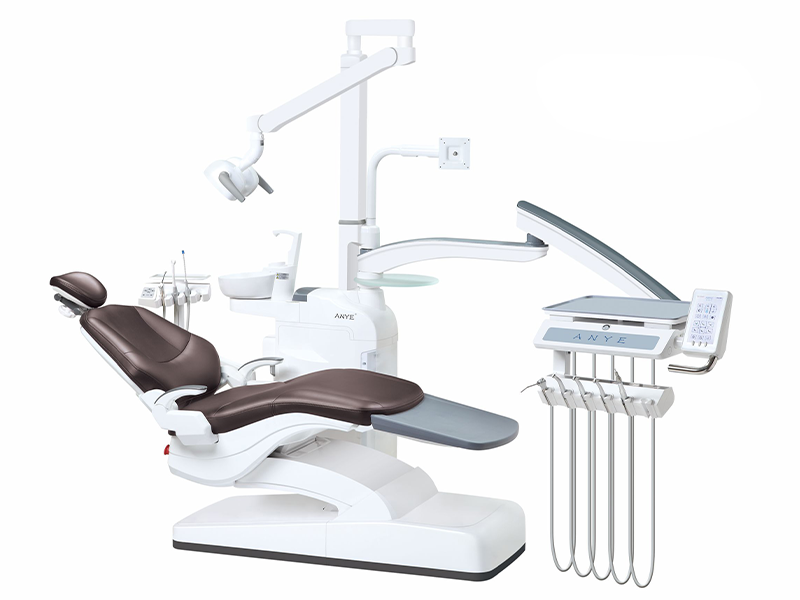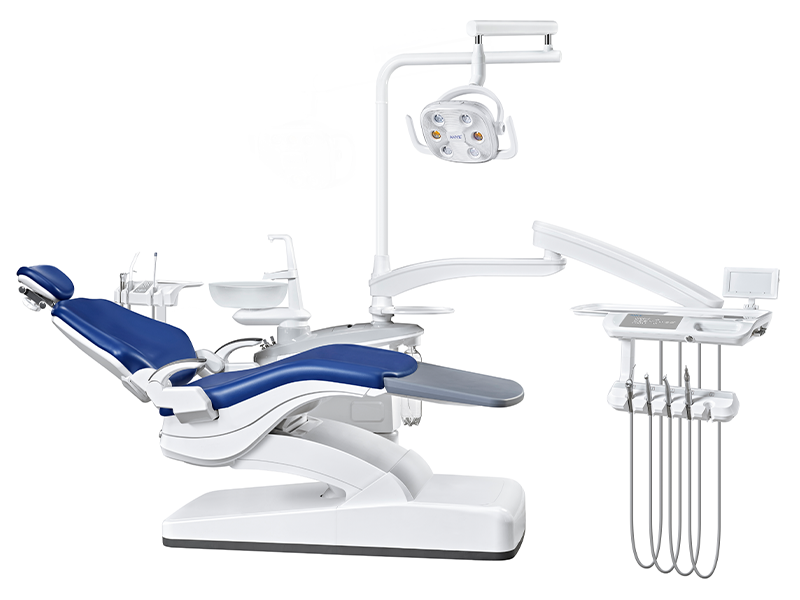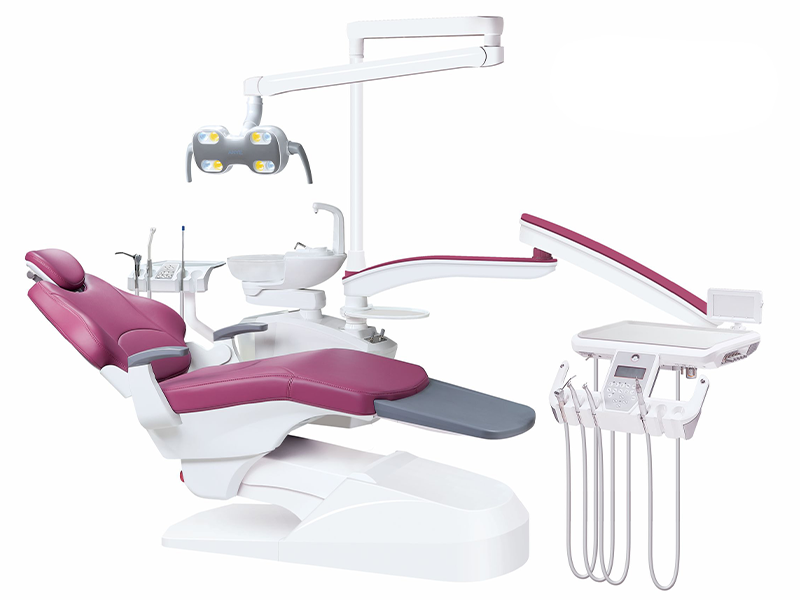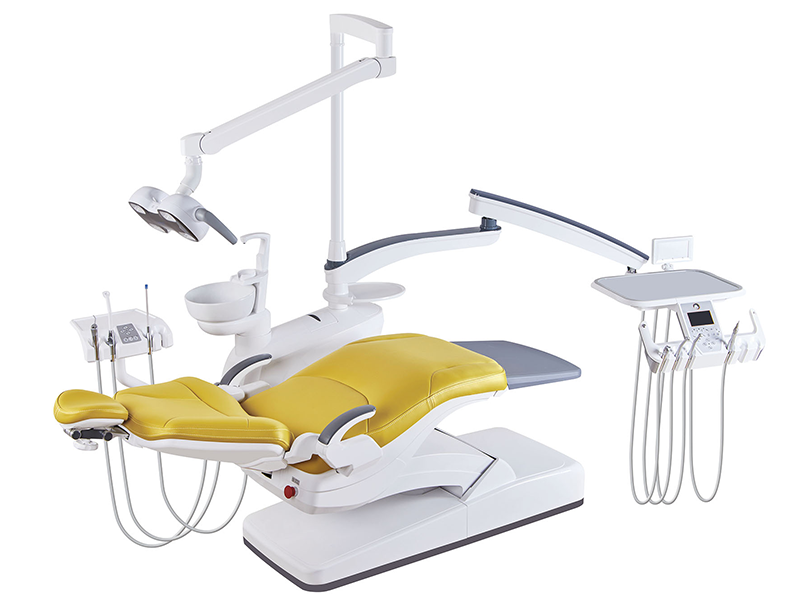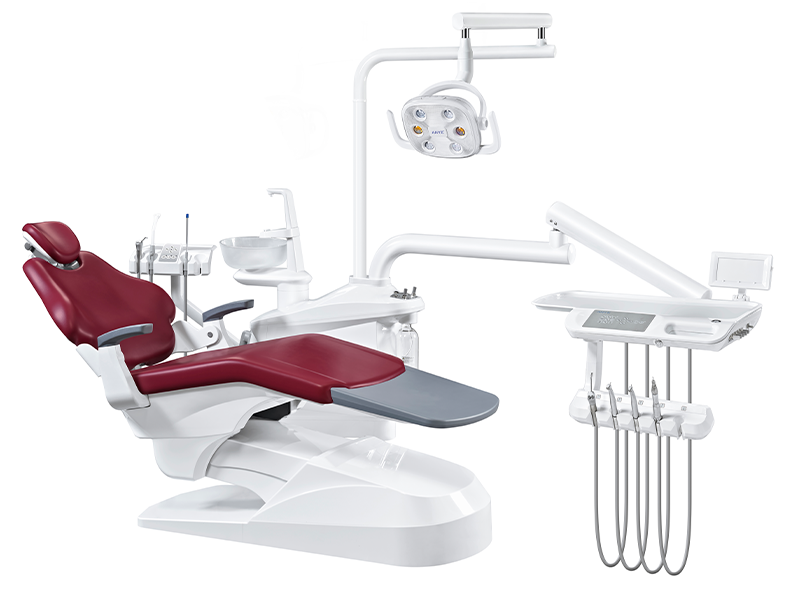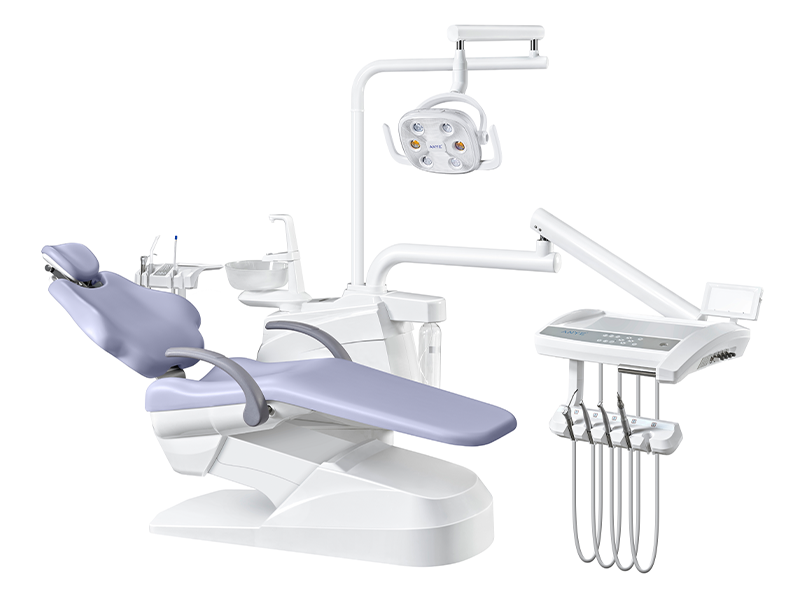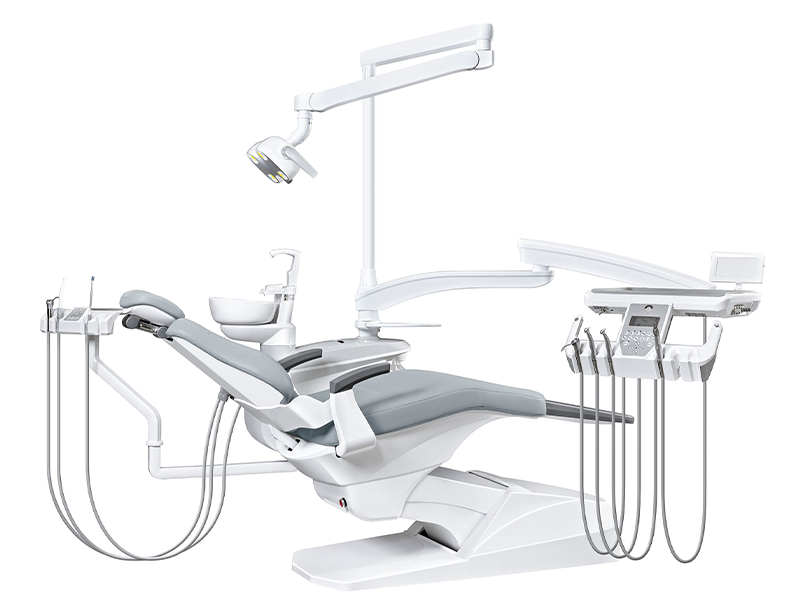In the rapidly evolving landscape of dental technology, artificial intelligence (AI) and the Internet of Things (IoT) are ushering in a new era of innovation for dental chairs. As we progress through 2024, these technologies are no longer futuristic concepts but tangible realities reshaping the dental industry. Anye Dental, a leading manufacturer of high-end dental comprehensive treatment units, stands at the forefront of this technological revolution. This article explores the transformative impact of AI and IoT on next-generation dental chairs and the unprecedented opportunities these advancements present for dental professionals and practices.
The Current State of Dental Technology in 2024
Before delving into the specifics of AI and IoT in dental chairs, it's crucial to understand the current technological landscape. As of 2024, the global dental equipment market has reached an estimated value of $8.5 billion, with smart dental chairs accounting for a significant portion of this growth. According to recent industry surveys, 68% of dental practices in the United States have adopted some form of AI-enabled technology, while 42% have implemented IoT devices in their operations.
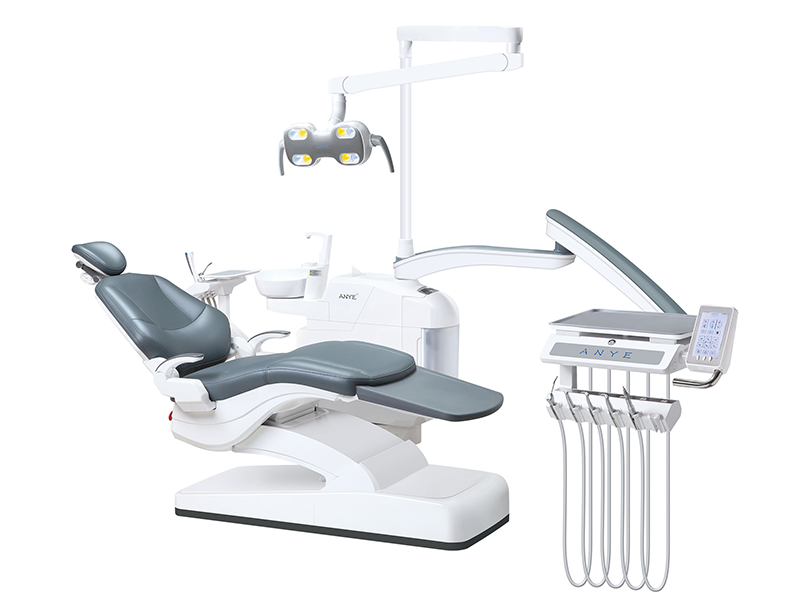
Anye Dental has been at the forefront of this technological adoption, consistently innovating to meet the evolving needs of dental professionals. Their latest line of dental chairs incorporates cutting-edge AI and IoT features, setting new standards for patient care and practice efficiency.
The AI-Powered Revolution in Dental Diagnostics
Artificial intelligence is reshaping the foundations of dental care, particularly in the realm of diagnostics. Smart dental chairs equipped with AI capabilities are setting new standards for accuracy and efficiency in dental examinations.
Enhanced Diagnostic Precision
AI algorithms integrated into Anye Dental's chairs can analyze vast amounts of data from multiple sources, including high-resolution imaging systems and patient history. This comprehensive analysis leads to:
-
Early detection of dental issues: AI can identify subtle signs of tooth decay, gum disease, or other oral health problems that might be overlooked by the human eye. For instance, a study published in the Journal of Dental Research in 2023 found that AI-assisted diagnosis could detect early-stage cavities with 92% accuracy, compared to 82% for human dentists alone.
-
Reduced false positives: By comparing patient data with extensive databases, AI minimizes the risk of misdiagnosis. The implementation of convolutional neural networks (CNNs) in dental imaging analysis has reduced false-positive rates by up to 30% in clinical trials.
-
Consistent results: AI provides standardized evaluations, reducing variability between different practitioners. This consistency is particularly valuable in multi-location dental practices or research settings.
Anye Dental's AI-powered chairs feature advanced imaging systems that work in tandem with machine learning algorithms to provide dentists with unparalleled diagnostic support. These systems can analyze X-rays, intraoral scans, and even microscopic images in real-time, highlighting areas of concern and suggesting potential treatment options.
Personalized Treatment Planning
The power of AI extends beyond diagnostics to treatment planning, offering tailored solutions for each patient:
-
Predictive analytics: AI can forecast the progression of dental conditions, allowing for proactive interventions. For example, machine learning models can predict the likelihood of tooth loss in periodontal patients with an accuracy of up to 85%, enabling targeted preventive care.
-
Treatment simulations: Patients can visualize potential outcomes of various treatment options, aiding in informed decision-making. Advanced 3D modeling coupled with AI can simulate dental procedures and their long-term effects, improving patient understanding and treatment acceptance rates.
-
Optimized treatment schedules: AI algorithms can determine the most effective sequence and timing for complex dental procedures. By analyzing factors such as healing time, patient availability, and treatment urgency, AI can create optimized treatment plans that reduce overall treatment time and improve outcomes.
Anye Dental's chairs come equipped with interactive displays that allow dentists to showcase these AI-generated treatment plans and simulations to patients, fostering better communication and trust.
IoT Integration: Connecting the Dental Ecosystem
The Internet of Things is transforming dental chairs from standalone units into interconnected hubs of patient care and practice management. This integration creates a "smart dental office" ecosystem where various devices communicate seamlessly to enhance patient care and operational efficiency.
Smart Sensor Networks
IoT-enabled dental chairs from Anye Dental incorporate a variety of sensors that continuously monitor and collect data:
-
Pressure sensors: These ensure optimal patient positioning and comfort throughout procedures. Advanced pressure mapping technology can detect subtle shifts in patient posture, automatically adjusting the chair to maintain ergonomic positioning for both patient and dentist.
-
Temperature sensors: Monitoring oral cavity temperature can indicate inflammation or infection. IoT-connected temperature sensors can track changes over time, alerting dentists to potential issues before they become visible.
-
Motion sensors: These track patient movement to enhance safety and precision during treatments. Integrated motion sensors can pause equipment operation if unexpected movement is detected, reducing the risk of accidents during procedures.
-
Biometric sensors: Newly developed sensors can monitor patient vital signs, such as heart rate and blood oxygen levels, providing a comprehensive health overview during dental procedures.
Anye Dental's latest chair models feature an integrated sensor hub that collects and processes data from all these sources, providing dentists with a holistic view of the patient's condition throughout the treatment process.
Real-Time Data Analytics
The wealth of data collected by IoT sensors is processed in real-time, providing invaluable insights:
-
Treatment efficacy tracking: Immediate feedback on procedure outcomes allows for on-the-fly adjustments. For instance, IoT-enabled dental drills can provide real-time feedback on drilling depth and angle, ensuring precise cavity preparation.
-
Equipment performance monitoring: Predictive maintenance alerts prevent unexpected downtime and extend the lifespan of dental chairs. By analyzing usage patterns and performance metrics, IoT systems can schedule maintenance before issues arise, reducing chair downtime by up to 40%.
-
Patient flow optimization: Data on chair usage patterns helps streamline scheduling and improve practice efficiency. AI-powered scheduling systems can analyze historical data to predict appointment durations and optimize daily schedules, potentially increasing patient throughput by 15-20%.
Anye Dental's IoT ecosystem extends beyond the chair itself, integrating with practice management software to provide a seamless workflow from patient check-in to follow-up care.
The Future of Dental Chair Technology
As AI and IoT technologies continue to advance, the possibilities for dental chair innovation are boundless. Anye Dental is actively researching and developing the next generation of smart dental chairs, incorporating cutting-edge features that promise to revolutionize dental care further.
Augmented Reality Integration
Next-generation dental chairs may incorporate augmented reality (AR) displays, offering:
-
Enhanced visualization: Overlay of digital information on the patient's actual dentition for precise treatment guidance. AR headsets integrated with dental chairs can project 3D models of the patient's teeth, allowing dentists to visualize treatment plans in real-time.
-
Interactive patient education: Real-time explanations of procedures using AR animations. Patients can view simplified AR representations of their dental conditions and proposed treatments, improving understanding and reducing anxiety.
-
Training simulations: Immersive learning experiences for dental students and professionals. AR-enabled dental chairs can simulate various dental procedures, allowing trainees to practice in a risk-free environment.
Anye Dental is at the forefront of AR integration, with prototype models already in testing phases that promise to bring these advanced features to market in the near future.
Voice-Controlled Operations
Voice recognition technology is set to revolutionize the way dentists interact with their equipment:
-
Hands-free control: Adjusting chair positions or activating instruments through voice commands. This feature is particularly valuable in maintaining sterility during procedures.
-
Digital note-taking: Verbal dictation of patient notes directly into electronic health records. AI-powered natural language processing can convert spoken notes into structured data, improving record-keeping efficiency.
-
Multilingual support: Breaking down language barriers in diverse patient populations. Real-time translation capabilities can facilitate communication between dentists and patients who speak different languages.
Anye Dental's research and development team is actively working on integrating advanced voice recognition systems into their chair designs, with plans to release voice-controlled models in the coming years.
Haptic Feedback and Robotics
Emerging technologies are pushing the boundaries of what dental chairs can offer:
-
Haptic feedback systems: Integration of force-feedback technology can provide dentists with tactile sensations during simulated procedures or even enhance precision during actual treatments.
-
Robotic assistance: Collaborative robots (cobots) integrated into dental chairs can assist with tasks such as instrument handling or providing additional lighting and suction.
While these technologies are still in the early stages of development, Anye Dental is investing heavily in research to bring haptic feedback and robotic assistance to their dental chairs, aiming to set new industry standards for precision and efficiency.
Opportunities for Dental Professionals
The integration of AI and IoT in dental chairs presents a wealth of opportunities for dental professionals to enhance their practice and patient care:
Enhanced Patient Experience
- Improved comfort: AI-driven adjustments and personalized settings ensure optimal patient positioning throughout procedures.
- Reduced anxiety: AR-based patient education and real-time procedure visualizations help alleviate patient concerns.
- Faster treatments: AI-optimized treatment plans and IoT-enabled efficiency improvements lead to shorter appointment times.
Increased Diagnostic Accuracy
- Early detection: AI-powered imaging analysis catches issues that might be missed by the human eye.
- Comprehensive health monitoring: Integration of biometric sensors provides a holistic view of patient health during dental procedures.
- Data-driven decision making: Access to real-time analytics and historical patient data supports more informed treatment choices.
Improved Practice Efficiency
- Streamlined workflows: IoT integration automates many administrative tasks, freeing up staff time for patient care.
- Predictive maintenance: IoT-enabled equipment monitoring reduces downtime and extends the lifespan of dental chairs.
- Optimized scheduling: AI algorithms help maximize chair utilization and improve patient flow.
Continuous Professional Development
- AR-based training: Immersive learning experiences for mastering new techniques and technologies.
- Data-driven insights: Analytics from AI and IoT systems provide valuable insights for improving clinical skills and practice management.
- Remote collaboration: IoT-enabled chairs facilitate teledentistry and remote consultations with specialists.
Choosing the Right AI and IoT-Enabled Dental Chair
For dental professionals looking to upgrade their practice with smart dental chairs, consider the following factors:
- Compatibility: Ensure the chair integrates seamlessly with your existing practice management software and equipment.
- Scalability: Look for systems that can be easily updated as new technologies emerge.
- User-friendliness: Choose chairs with intuitive interfaces that require minimal training for staff.
- Data security: Verify that the system complies with healthcare data protection regulations like HIPAA.
- Customization options: Seek chairs that offer personalized settings for different practitioners and procedures.
Anye Dental offers a range of AI and IoT-enabled dental chairs designed to meet the diverse needs of modern dental practices. From entry-level smart chairs to fully integrated AI-powered units, Anye Dental provides solutions that can grow with your practice.
Conclusion: Embracing the Smart Dental Future
The integration of AI and IoT in dental chairs represents a paradigm shift in oral healthcare. For dental professionals, this technological revolution offers unprecedented opportunities to enhance patient care, improve practice efficiency, and stay at the forefront of dental innovation.
As we look to the future, it's clear that the dental chairs of tomorrow will be more than just a place for treatment—they will be intelligent, connected hubs that form the cornerstone of modern dental practices. By embracing these advancements, dental professionals can position themselves to provide cutting-edge care and create more satisfying experiences for both patients and practitioners.
Anye Dental remains committed to leading this technological revolution, continuously innovating to bring the most advanced, reliable, and user-friendly dental chairs to market. As you consider upgrading your practice with smart dental chair technology, explore Anye Dental's range of AI and IoT-enabled solutions to find the perfect fit for your needs.
FAQs
-
Q: How do AI-enabled dental chairs improve diagnostic accuracy? A: AI-enabled dental chairs use advanced algorithms to analyze imaging data, detecting subtle signs of dental issues with higher accuracy than the human eye alone. They can identify early-stage cavities, gum disease, and other oral health problems, reducing the risk of misdiagnosis and enabling proactive treatment.
-
Q: What are the main benefits of IoT integration in dental chairs? A: IoT integration in dental chairs offers several benefits, including real-time data collection for improved patient care, predictive maintenance to reduce downtime, optimized scheduling for better practice efficiency, and seamless integration with other dental office systems for a more streamlined workflow.
-
Q: How can AI and IoT-enabled dental chairs help reduce patient anxiety? A: These advanced chairs can provide personalized comfort settings, offer AR-based patient education to explain procedures, and enable faster, more efficient treatments. By improving communication and reducing uncertainty, they help alleviate patient anxiety during dental visits.
-
Q: Are AI and IoT-enabled dental chairs difficult to use for dental staff? A: Modern AI and IoT-enabled chairs, like those offered by Anye Dental, are designed with user-friendliness in mind. They typically feature intuitive interfaces and can be integrated with existing practice management software, minimizing the learning curve for dental staff.
-
Q: How do smart dental chairs contribute to practice growth? A: Smart dental chairs contribute to practice growth by improving diagnostic accuracy, enhancing patient experience, increasing operational efficiency, and enabling data-driven decision-making. These factors can lead to better patient outcomes, increased patient satisfaction, and improved practice reputation.

